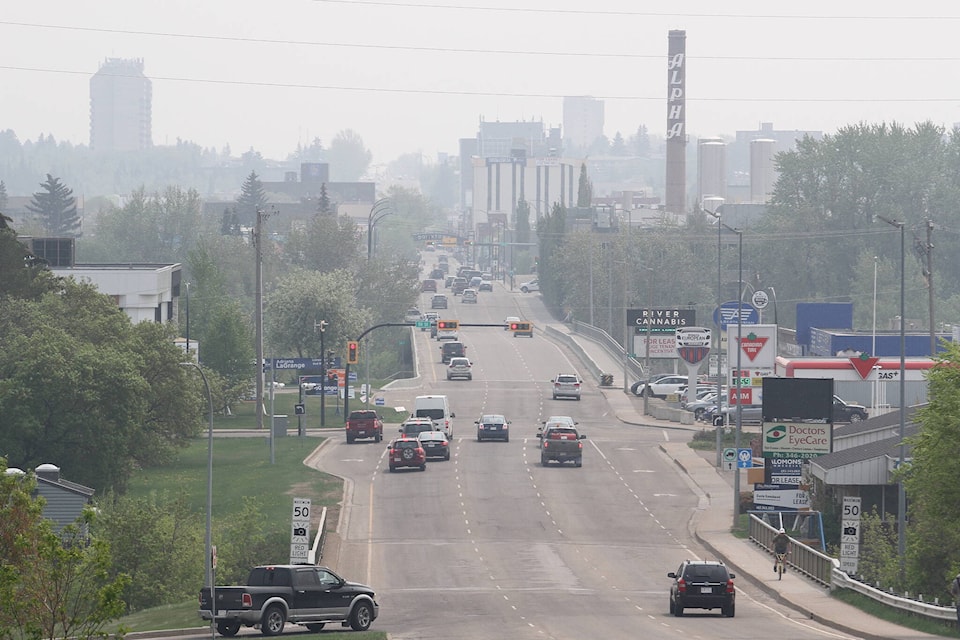Last summer’s air quality from wildfire smoke was so bad it was off the charts — literally.
“The number of events and the magnitude of these events was unprecedented,” said Kevin Warren, executive-director of the Parkland Airshed management Zone (PAMZ), which operates monitoring stations across central Alberta and in Red Deer (one in Lancaster and the other on Riverside Drive).
So many mandated calls about poor air quality were coming in from across Alberta to the provincial data gathering warehouse that Warren said it was “overwhelmed.” Protocols had to be changed to allow air monitoring groups to call in only once to report an entire week of poor readings.
This makes it difficult to precisely tell how many days were at number eight or higher on an air quality scale of 1 (low risk) to 10 (highest risk), based on a 24-hour average. But Warren noted there were some days when the air quality was rated an 11 — an off-the-chart number that denotes “very high risk” and covers anything worse than a 10 on the index.
If 10 is usually the worst, “then exceeding that is going to be pretty bad,” he added.
The 2023 wildfire season was the most disruptive and alarming in Canada’s recorded history, with evacuations in B.C., North West Territories, as well as remote communities in northern Alberta. Warren hoping this is an aberration, but he noted there was some bad air in the summer of 2022 and in previous years as well.
The health danger comes from ash and other fine particulates from the fires getting into people’s lungs and then their blood streams. Also dangerous is the formation of aerosols when pollutants coalesce with water in the air, said Warren.
“We know there are a higher number of hospital visits and a high number of people who will have health difficulties.”
If climate change makes wildfires a regular part of our summers,”we are going to have to learn to live with it,” he added. This will mean limiting outdoor activities when the index is at a 7 or higher, or wearing a mask if you have asthma or are otherwise susceptible.
PAMZ monitors air quality throughout the year. Winter inversion systems — where warm upper air acts like a lid, trapping cooler air near ground — can pin pollutants instead of allowing them to disperse into the atmosphere, creating poor air quality.
In order to reduce the pollution we can control, Warren encourages commuters to car-pool or use transit to get to the office, work from home when possible, or start earlier or later to avoid adding to vehicle pollution at rush hours.
Some good news over the past 25 years is an overall reduction in sulphur dioxide in Alberta. Not only do energy technologies allow these gases to be put back into the production stream instead of burned off, but most recent gas discoveries have been sweet gas, which doesn’t contain SO2, Warren added.
